#insulators
Text
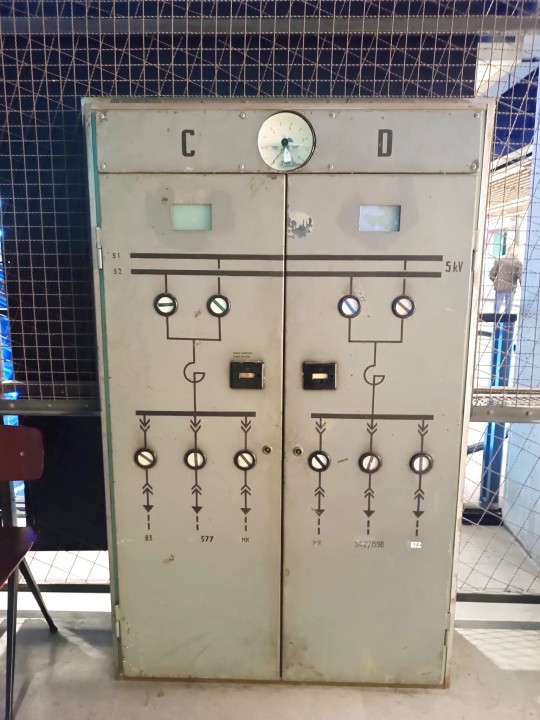

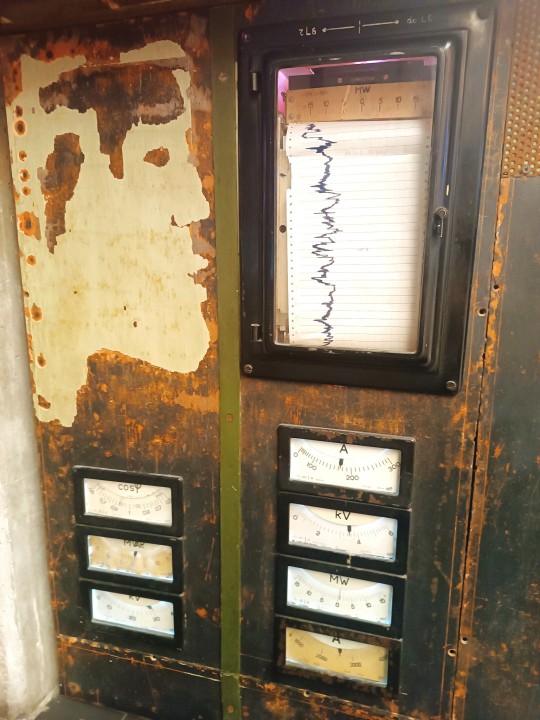
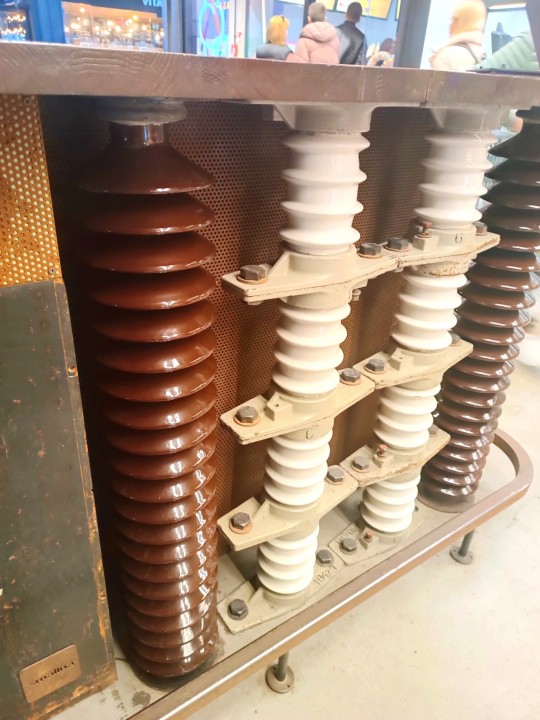
Powiśle Power Plant 🏭, Warsaw
#aesthetic#cyberpunk#tech#tech aesthetic#technology#old tech#power plant#vintage#electricity#engineering#electrical engineering#industrial#electrical engineer#elektrostantsiyapost#power engineering#electrical energy#switchgear#generator#turbine#insulators#techwave#techcore#thermal power plant#coal power plant#circuits#power generation#warsaw#poland#powiśle power plant#decor
80 notes
·
View notes
Text

Evidence that atomically thin hafnium telluride is an excitonic insulator
The condensation of excitons with non-zero momentum can give rise to so-called charge density waves (CDW). This phenomenon can prompt the transition of materials into a fascinating new quantum phase, known as an excitonic insulator.
Researchers at Shanghai Jiao Tong University and other institutes recently carried out a study exploring the possibility that this metal-insulator transition could occur in the atomically thin semi-metallic HfTe2. Their observations, outlined in Nature Physics, unveiled possible excitonic CDW and metal-insulator transitions in the atomically thin material.
"The formation of CDW in materials has various mechanisms (e.g., Fermi surface nesting, lattice distortions, etc.) and exclusion of other CDW formation mechanisms is the key to identifying the existence of an excitonic insulator," Peng Chen, corresponding author of the paper, told Phys.org.
Read more.
#Materials Science#Science#Hafnium#Tellurium#Insulators#Excitons#Charge density waves#Quantum mechanics#2D materials
18 notes
·
View notes
Text
What is FRP Products and Its Uses?
Fiber-reinforced plastic (FRP) products are composite materials made from a combination of fibers and a resin matrix. The fibers provide the strength and stiffness, while the resin matrix holds the fibers together and protects them from environmental factors such as moisture, chemicals, and UV light.

FRP products are used in a variety of industries and applications, thanks to their unique properties, which include:
High strength-to-weight ratio: FRP products are significantly lighter than traditional materials such as steel, aluminum, and concrete, while still providing high strength and stiffness. This makes them ideal for applications where weight reduction is critical, such as aerospace, automotive, and marine industries.
Corrosion resistance: FRP products are highly resistant to corrosion, making them ideal for use in harsh environments such as chemical plants, wastewater treatment facilities, and offshore structures.
Electrical insulation: FRP products are non-conductive, meaning they do not conduct electricity. This makes them ideal for use in electrical and electronic applications where electrical insulation is required.
Design flexibility: FRP products can be easily molded into complex shapes, allowing for greater design flexibility and customization. This makes them ideal for applications where unique shapes and sizes are required.
Some common FRP products and their uses include:
FRP grating: Used in industrial, commercial, and recreational applications as an alternative to steel grating, due to its high strength, corrosion resistance, and low maintenance requirements.
FRP tanks and vessels: Used in chemical storage and processing, wastewater treatment, and oil and gas industries due to their corrosion resistance, high strength, and light weight.
FRP piping systems: Used in chemical processing, power generation, and water treatment industries due to their corrosion resistance, low maintenance requirements, and long service life.
FRP panels: Used in commercial and industrial buildings as wall and ceiling panels, due to their high strength, durability, and design flexibility.
In conclusion, FRP products are composite materials that offer high strength, low weight, and corrosion resistance, making them ideal for a wide range of applications in various industries. As technology advances and new materials are developed, FRP products are likely to continue to play an important role in the construction of products and structures in the future.
2 notes
·
View notes
Text
SEDIVER 120KN
Ready Stock Sell>> Disc Insulator Glass SEDIVER 120KN Type STANDARD/NORMAL and ANTI FOG, SUTET Disc Insulator 120KN Type STANDARD and NORMAL. New Condition.
Mobile/WA: +62 812 2277-7236
Mail-to: [email protected]
disc-insulator sediver-120KN

View On WordPress
#Disc insulator#disc insulator glass#insulator 120KN#insulators#sedivar insulator#SEDIVER#sediver 120KN#sediver 120KN gtlass#Sediver disc insulator
0 notes
Text
Cross Arm Insulators
Cross Arm Insulators are used in electrical systems to provide insulation and mechanical support to the cross arm and conductor. They are typically used in low and medium-voltage applications and are one of the essential components of electrical systems. Cross Arm Insulators are designed to withstand weather conditions such as wind, snow, or rain and are made of materials like porcelain, glass, or composite.
YF POWER is a leading brand in the Cross Arm Insulator industry, with a focus on providing innovative solutions that meet the evolving needs of the electrical industry. YF POWER Cross Arm Insulators have a reputation for their superior quality and are known for their resistance to weather and chemical corrosion. These insulators are rigorously tested to ensure they can withstand a high voltage, ensuring optimal performance and safety.
YF POWER Cross Arm Insulators are suitable for a wide range of applications, including overhead power lines, transformers, and light poles. With their commitment to innovation and customer satisfaction, YF POWER Cross Arm Insulators deliver high performance and longevity, making them a reliable choice for electrical applications.
Types of Cross Arm Insulators
Advantages of Cross Arm Insulators
Cross arm insulators are essential components of electrical systems that provide insulation and support to the cross arm and conductor. The advantages of Cross Arm Insulators include:
1. Electrical insulation-Cross arm insulators provide effective electrical insulation to prevent current loss in the power line.
2. Mechanical strength-They provide mechanical support to the conductor and cross arm to withstand environmental and weather stresses like wind, rain, and snow.
3. Corrosion resistance-Cross arm insulators are made of materials that are resistant to corrosion from acid, salt, and other harmful elements.
4. Durability- They offer long-term performance and modern high-tech insulator materials like composite withstand failure due to moisture.
5. Low maintenance- Cross arm insulators require little to no maintenance and cleaning because their design is self-cleaning.
Cross arm insulators are suitable for various power system applications, and their durability and low maintenance nature make them attractive in various terrain conditions.
Working Principle of Cross Arm Insulators
The working principle of Cross arm insulators is based on their ability to provide insulation and mechanical support to the cross arm and conductor. These insulators prevent the transmission of electrical currents through the supporting structure.
Cross arm insulators have a cylindrical shape with one or more grooves designed to ensure optimal electrical insulation. They are typically made of materials like porcelain or composite, which have good electrical insulation properties.
During their operation, Cross arm insulators are mounted on a cross arm or structure and attached to a conductor wire. Their cylindrical shape provides mechanical support and prevents electrical currents from escaping.
These insulators areself-cleaning and are designed to be robust and durable to withstand extreme weather conditions. They have been tested to hold up to the harshest environmental stresses and remain reliable under extreme conditions.
Overall, Cross arm insulators provide reliable electrical insulation and mechanical support to overhead power lines, ensuring safe and efficient energy transmission. Their working principle ensures resilience in maintaining an effective energy transmission grid.

0 notes
Text

Enhance your connectivity with Neelkanth Cables
#neelkanthcables#cablesandwires#electriccables#powercables#electricalwiring#electricalcablemanufacturer#cable#cables#wires#wire#electrical#powerlines#power#aluminum#datacabling#cablemanagement#powerlineupgrades#insulators#nationalgridpowerlines#industrial#engineering#network#a#electrician#cableconnection#electricwires#topcableglobal
0 notes
Text

Day 3170
September 5, 2023
1 note
·
View note
Text
Power Transmission Component Market Analysis Key Trends, Growth Opportunities, Outlook to 2032
Overview of the Power Transmission Component Market:
The power transmission component market involves the manufacturing, distribution, and sales of various components used in power transmission systems. These components are essential for the efficient and reliable transfer of electrical power from power generation sources to end-users. The market encompasses a wide range of products, including transformers, cables, and switchgear, circuit breakers, insulators, and transmission towers.
Power Transmission Component Market size exceeded USD 71 billion in 2021 and is projected to grow at over 4.4% CAGR from 2022 to 2030.
Key Factors Driving the Power Transmission Component Market:
Growing Energy Demand: The increasing global demand for electricity, driven by population growth, industrialization, and urbanization, is a key factor driving the power transmission component market. Power transmission components are crucial for the expansion and upgrade of electrical grids to meet the rising energy demand.
Renewable Energy Integration: The transition to renewable energy sources, such as solar and wind power, requires the integration of these intermittent energy sources into existing power grids. Power transmission components, such as transformers and switchgear, facilitate the efficient integration and transmission of renewable energy.
Grid Modernization and Upgrades: Aging power transmission infrastructure in many countries necessitates grid modernization and upgrades. Governments and utility companies are investing in the refurbishment and expansion of transmission networks, driving the demand for power transmission components.
Rising Investments in T&D Infrastructure: Increasing investments in transmission and distribution (T&D) infrastructure, particularly in developing economies, contribute to the growth of the power transmission component market. These investments aim to improve grid reliability, reduce transmission losses, and expand access to electricity.
Grid Resilience and Stability: Power transmission components play a critical role in ensuring the stability and resilience of electrical grids. Factors such as grid reliability, voltage control, and fault detection and mitigation are driving the demand for advanced power transmission components.
Government Regulations and Standards: Governments and regulatory bodies have implemented standards and regulations related to grid efficiency, reliability, and safety. Compliance with these regulations often requires upgrades and investments in power transmission components.
Technological Advancements: Technological advancements in power transmission components, such as the development of high-voltage direct current (HVDC) transmission systems, advanced materials, and digital monitoring and control systems, drive market growth. These advancements improve efficiency, reliability, and the ability to transmit power over longer distances.
The demand for power transmission components is driven by several factors, including growing electricity consumption, increasing investments in energy infrastructure, renewable energy integration, grid modernization initiatives, and electrification of various sectors. Here are some key aspects influencing the demand for power transmission components:
Growing Electricity Consumption: The rising global population, industrialization, and urbanization have led to increased electricity consumption. This drives the demand for power transmission components to expand and upgrade transmission networks to meet the growing electricity demand.
Infrastructure Investments: Governments and utilities worldwide are investing in the development and expansion of power transmission infrastructure to ensure reliable and efficient electricity transmission. This includes the construction of new transmission lines, substations, and associated power transmission components.
Renewable Energy Integration: The shift towards renewable energy sources, such as wind and solar, necessitates the integration of these intermittent power sources into the grid. Power transmission components, including converters, transformers, and grid interconnections, are in demand to facilitate the efficient integration of renewable energy generation into the existing transmission infrastructure.
Grid Modernization Initiatives: Many countries are focusing on modernizing their electrical grids to enhance reliability, efficiency, and flexibility. This involves the deployment of advanced power transmission components like smart grid technologies, digital control systems, and advanced sensors to monitor and manage the transmission network effectively.
Electrification of Transportation: The increasing adoption of electric vehicles (EVs) and the expansion of charging infrastructure require power transmission components capable of efficiently delivering electricity to charging stations. This includes transformers, cables, and connectors that can handle the high-power demands of EV charging.
Energy Efficiency and Grid Optimization: Energy conservation and efficiency measures drive the demand for power transmission components designed to minimize losses during electricity transmission. Upgrading and replacing aging infrastructure with high-efficiency transformers, conductors, and monitoring systems help improve overall grid efficiency.
Grid Resilience and Reliability: Power transmission components play a crucial role in ensuring grid resilience and reliability, particularly in regions prone to extreme weather events or areas with aging infrastructure. Upgrading transmission lines, substations, and associated components helps enhance the grid's resilience and minimize disruptions.
Cross-Border Interconnections: The establishment of cross-border interconnections between neighboring countries or regions enables efficient power exchange, renewable energy sharing, and grid stability. Power transmission components for interconnections, such as high-capacity transmission lines and interconnectors, experience increased demand to support cross-border electricity transmission.
Decentralized Energy Generation: The increasing adoption of distributed energy resources (DERs), including rooftop solar panels, wind turbines, and energy storage systems, drives the demand for power transmission components that enable the integration of decentralized energy generation into the grid. This involves components like inverters, grid-tie systems, and smart distribution systems.
Upgrades and Replacement of Aging Infrastructure: In many regions, existing power transmission infrastructure is aging and requires upgrades or replacement. This drives the demand for power transmission components to modernize and improve the capacity, efficiency, and reliability of the transmission network.
We recommend referring our Stringent datalytics firm, industry publications, and websites that specialize in providing market reports. These sources often offer comprehensive analysis, market trends, growth forecasts, competitive landscape, and other valuable insights into this market.
By visiting our website or contacting us directly, you can explore the availability of specific reports related to this market. These reports often require a purchase or subscription, but we provide comprehensive and in-depth information that can be valuable for businesses, investors, and individuals interested in this market. “Remember to look for recent reports to ensure you have the most current and relevant information.”
Click Here, To Get Free Sample Report: https://stringentdatalytics.com/sample-request/power-transmission-component-market/11353/
Market Segmentations:
Global Power Transmission Component Market: By Company
• ABB
• Toshiba
• EATON
• Siemens
• Crompton Greaves
• General Electric
• Hitachi
• Schneider Electric
• Mitsubishi
• Hyundai
• BHEL
• Emerson
Global Power Transmission Component Market: By Type
• Transformer
• Circuit Breaker
• Insulator
• Arrestor
• Transmission Line
• Transmission Tower
• Others
Global Power Transmission Component Market: By Application
• Energy
• Industrial
• Military & Defense
• Others
Global Power Transmission Component Market: Regional Analysis
The regional analysis of the global Power Transmission Component market provides insights into the market's performance across different regions of the world. The analysis is based on recent and future trends and includes market forecast for the prediction period. The countries covered in the regional analysis of the Power Transmission Component market report are as follows:
North America: The North America region includes the U.S., Canada, and Mexico. The U.S. is the largest market for Power Transmission Component in this region, followed by Canada and Mexico. The market growth in this region is primarily driven by the presence of key market players and the increasing demand for the product.
Europe: The Europe region includes Germany, France, U.K., Russia, Italy, Spain, Turkey, Netherlands, Switzerland, Belgium, and Rest of Europe. Germany is the largest market for Power Transmission Component in this region, followed by the U.K. and France. The market growth in this region is driven by the increasing demand for the product in the automotive and aerospace sectors.
Asia-Pacific: The Asia-Pacific region includes Singapore, Malaysia, Australia, Thailand, Indonesia, Philippines, China, Japan, India, South Korea, and Rest of Asia-Pacific. China is the largest market for Power Transmission Component in this region, followed by Japan and India. The market growth in this region is driven by the increasing adoption of the product in various end-use industries, such as automotive, aerospace, and construction.
Middle East and Africa: The Middle East and Africa region includes Saudi Arabia, U.A.E, South Africa, Egypt, Israel, and Rest of Middle East and Africa. The market growth in this region is driven by the increasing demand for the product in the aerospace and defense sectors.
South America: The South America region includes Argentina, Brazil, and Rest of South America. Brazil is the largest market for Power Transmission Component in this region, followed by Argentina. The market growth in this region is primarily driven by the increasing demand for the product in the automotive sector.
Click Here, To Purchase Premium Report: https://stringentdatalytics.com/purchase/power-transmission-component-market/11353/?license=single
Reasons to Purchase Power Transmission Component Market Report:
• To gain insights into market trends and dynamics: this reports provide valuable insights into industry trends and dynamics, including market size, growth rates, and key drivers and challenges.
• To identify key players and competitors: this research reports can help businesses identify key players and competitors in their industry, including their market share, strategies, and strengths and weaknesses.
• To understand consumer behavior: this research reports can provide valuable insights into consumer behavior, including their preferences, purchasing habits, and demographics.
• To evaluate market opportunities: this research reports can help businesses evaluate market opportunities, including potential new products or services, new markets, and emerging trends.
• To make informed business decisions: this research reports provide businesses with data-driven insights that can help them make informed business decisions, including strategic planning, product development, and marketing and advertising strategies.
Overall, market research reports provide businesses and organizations with valuable information that can help them make informed decisions and stay competitive in their industry. They can provide a solid foundation for business planning, strategy development, and decision-making.
About US:
Stringent Datalytics offers both custom and syndicated market research reports. Custom market research reports are tailored to a specific client's needs and requirements. These reports provide unique insights into a particular industry or market segment and can help businesses make informed decisions about their strategies and operations.
Syndicated market research reports, on the other hand, are pre-existing reports that are available for purchase by multiple clients. These reports are often produced on a regular basis, such as annually or quarterly, and cover a broad range of industries and market segments. Syndicated reports provide clients with insights into industry trends, market sizes, and competitive landscapes. By offering both custom and syndicated reports, Stringent Datalytics can provide clients with a range of market research solutions that can be customized to their specific needs
Contact US:
Stringent Datalytics
Contact No - +1 346 666 6655
Email Id - [email protected]
Web - https://stringentdatalytics.com/
#Power Transmission Component Market Analysis Key Trends#Growth Opportunities#Outlook to 2032#The power transmission component market involves the manufacturing#distribution#and sales of various components used in power transmission systems. These components are essential for the efficient and reliable transfer#including transformers#cables#and switchgear#circuit breakers#insulators#and transmission towers.#Power Transmission Component Market size exceeded USD 71 billion in 2021 and is projected to grow at over 4.4% CAGR from 2022 to 2030.
0 notes
Text

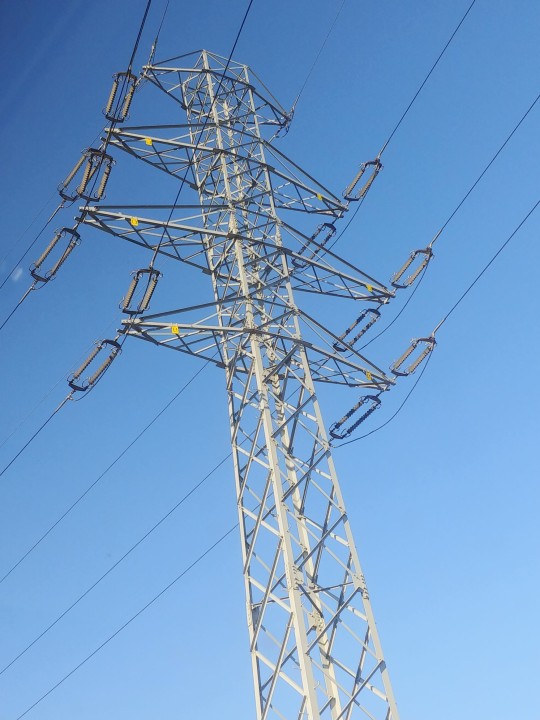
#aesthetic#cyberpunk#tech#tech aesthetic#electricity#elektrostantsiyapost#high voltage#pylons#power lines#industrial#power transmission#wires#insulators#electrical#electrical engineering#electricity is beautiful#electricity is love#love electricity#electricity aesthetic#sky#blue#sunlight#power lines aesthetic#steel#engineering#gray#surge protection#skies#power transmission lines#photography
675 notes
·
View notes
Text
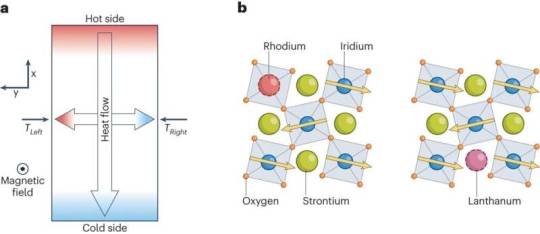
Evidence of phonon chirality from impurity scattering in the antiferromagnetic insulator strontium iridium oxide
The thermal hall effect (THE) is a physical phenomenon characterized by tiny transverse temperature differences occurring in a material when a thermal current passes through it and a perpendicular magnetic field is applied to it. This effect has been observed in a growing number of insulators, yet its underlying physics remains poorly understood.
Researchers at Université de Sherbrooke in Canada have been trying to identify the mechanism behind this effect in different materials. Their most recent paper, published in Nature Physics, specifically examined this effect in the antiferromagnetic insulator strontium iridium oxide (Sr2IrO4).
"Our current research activity on the THE in insulators started with our discovery of a large THE in cuprate superconductors," Louis Taillefer, co-author of the paper, told Phys.org.
Read more.
#Materials Science#Science#Phonons#Chirality#Antiferromagnetism#Strontium#Indium#Oxides#Hall effect#University of Sherbrooke#Insulators
7 notes
·
View notes
Text
Robert House watching The Courier rip all the copper wiring out the walls of the Lucky 38

#omw to sell it as scrap at Mick and Ralph’s#or for the gun runners maybe#oc: wesson-smith kelly#he’s awful he’s the worst he’s my little pookie bear#no time to listen to your plans or views on social economics#need money to loose at the slot machines#you bet the wrong horse in this race#no main quest side tasks only#I am in your walls stealing your loft insulation#do not talk to me#crime time 😎#all bundled up in the backseat of The Highwayman#the custom license place says $CAM1IN#fallout new vegas#fallout#courier six#courier 6#Robert house#fallout memes#fallout nv memes#fallout nv#so many tags#babygirl why are we talking about philosophy#no helgian dialects here I’m about to send ghoulies to the moon#exploding house with my mind#my courier is the worst I love him I hate him I would not let him in my house#fallout new vegas memes
6K notes
·
View notes
Video
Sublime Components 001 : Field Networks (Bramdean) by Russell Moreton
Via Flickr:
Ceramic Insulators We are living through a protracted epidemic of confusion about the difference between artworks and documents. A border is being blurred. The convergence of Minimalism and the Bechers had given documentary images a secure place in the world of art. Cruel and tender Carter Ratcliff 1 June 2003 www.tate.org.uk/context-comment/cruel-and-tender
#ceramic#insulators#luminance#conduit#field#network#sublime#components#agents#light#drawing#solarized#analogue#digital#lightroom#minimalism#documentary#images#surface tension#typologies#industrial#russell moreton#visual fine art#spatial practice#research creation#ecology of experience#useless flickr uploader#flickr
1 note
·
View note
Text
What are the Differences between Conductors, Semiconductors and Insulators?
A conductor allows an electron to move easily from one atom to another when the right voltage is applied, as there are no band gaps between the valence and conduction bands. Some materials conductor and valence bands overlap, allowing electrons to flow between the two overlapping bands. Because there is space for electrons to travel into the conduction band, one electron from the valence band moves into the other band, allowing conductivity.
A semiconductor with moderate conductivity has a conductivity value between that of a conductor, such as silver, and an insulator, such as the mica used in Elmelin’s product line. As a semiconductor’s temperature rises, its resistance decreases. Semiconductors include elements or metalloids such as silicon (Si), germanium (Ge), and selenium (Se), as well as compounds such as gallium arsenide (GaAs) and indium antimonide (InSb), from which Silicon is the most commonly used semiconductor.
An insulator restricts energy from flowing between two things. Insulators, for example, can restrict the flow of electricity, heat, or sound. Thermal insulators prevent heat from being transferred between two objects of different temperatures. Thermal insulators do this by reflecting heat. Because insulative capacity is the inverse of heat conductivity (k), materials with low thermal conductivity will have a high insulating capability or resistance value. Product density (ρ) and specific heat capacity © are also significant parameters to consider.
Differences between Conductors, Semiconductors, and Insulators
Conductors
· Materials that allow electricity or heat to flow through them.
· Aluminium, Silver, and iron are examples of conductors.
· Electrons are free to migrate throughout the conductor.
· On the surface, there is an electric field, yet it is zero on the inside.
Semiconductors
· Materials that moderately allow the flow of heat or electricity.
· Silicon (Si), germanium (Ge), and selenium (Se) are some examples.
· Electrons have low mobility due to the higher atomic force.
· The electric field is inside and outside.
Insulators
· Materials that do not allow the passage of heat or electricity.
· Paper, wood, and rubber are all examples of insulators.
· Electrons cannot easily migrate within the insulator.
· There is no such thing as an electric field.
To learn more about conductors semiconductors and insulators, sign up for Tutoroot’s personalized learning sessions. Tutoroot is dedicated to assisting you in achieving the highest academic grades.
0 notes
Text
Imperfections Affect Quantum Materials’ Unusual Behavior More Than We Realize - Technology Org
New Post has been published on https://thedigitalinsider.com/imperfections-affect-quantum-materials-unusual-behavior-more-than-we-realize-technology-org/
Imperfections Affect Quantum Materials’ Unusual Behavior More Than We Realize - Technology Org
UB physicist receives DOE grant to explore interplay between disorder and strong interaction between electrons in quantum materials.
In the field of materials science, disorder gets a bad rap.
Disorder — imperfections in a material’s structure — is typically something to be avoided, especially when synthesizing quantum materials whose exotic properties offer great potential for superconductors and ultrafast computers.
Yet every material has some amount of disorder, and, for some, disorder may explain why they exhibit their exciting properties in the first place.
Herbert Fotso, associate professor in the University at Buffalo Department of Physics, has received a grant from the Department of Energy to study quantum materials and how disorder affects their behavior. Photo credit: Meredith Forrest Kulwicki/University at Buffalo
University at Buffalo condensed matter physicist Herbert Fotso, PhD, is the principal investigator on a recent $225,967 grant from the Department of Energy to study quantum materials and how disorder affects their behavior.
“We hope to fill a vacuum of information that can enable breakthroughs in materials science and even guide the synthesis of new materials,” says Fotso, associate professor in the UB Department of Physics, within the College of Arts and Sciences.
In this collaborative project with Hanna Terletska, PhD, associate professor in the Department of Physics and Astronomy at Middle Tennessee State University, Fotso will create computational models to better understand the role of disorder in quantum materials that also have strong interactions between their electrons when driven away from equilibrium.
“Very often, studies of quantum materials have considered strong interaction between electrons and disorder separately,” Fotso says. “We’re proposing methods to study the interplay of interaction and disorder, evaluating what happens when both of these are important in a given material.”
For example, metal-to-insulator transitions can be driven by both disorder and interaction. Some materials that should conduct electricity instead act as insulators due to some level of disorder. In other cases, a material may act as an insulator because the interactions between its electrons are so strong that they cannot move freely.
“So what happens when these two elements are present in the same material? This interplay gives rise to a number of rather interesting and sometimes surprising behaviors,” Fotso says.
Typically, scientists analyze a material’s properties by increasing its charge concentration. However, this process often also creates some disorder in the material. In some cases, disorder may ultimately be more responsible for the observed properties than the increased charge concentration.
Fotso says precise, well-behaved materials are the foundation of materials science and the development of materials for quantum computing in particular, so scientists need an accurate understanding of why materials behave the way they do.
“When you’re running experiments, you want to be able to anticipate your results. Those expectations are guided by theory, and that theory must factor in the key parameters of the system,” he says. “If you don’t have all of the key parameters, you will miss out on what exactly is happening in that material.”
Fotso and Terletska’s computational models will be released as open-source tools, allowing other research groups to take advantage and enable studies of quantum materials that were previously inaccessible.
“Ideally, as a community, we do not want research groups across the world to be duplicating efforts because time is valuable,” says Fotso, who joined UB in 2022. “Increasingly, many of the problems that are relevant to future technologies will involve many different subfields of not only science, but even subfields within physics and within condensed matter physics.”
Source: State University of New York at Buffalo
You can offer your link to a page which is relevant to the topic of this post.
#2022#Arts#Astronomy#Behavior#Chemistry & materials science news#collaborative#Community#computers#computing#development#electricity#electrons#energy#factor#Featured physics news#Foundation#Fundamental physics news#Future#how#insulators#interaction#Link#material#materials#materials science#matter#Nanotechnology news#new york#Optics & photonics news#Other
0 notes
Text

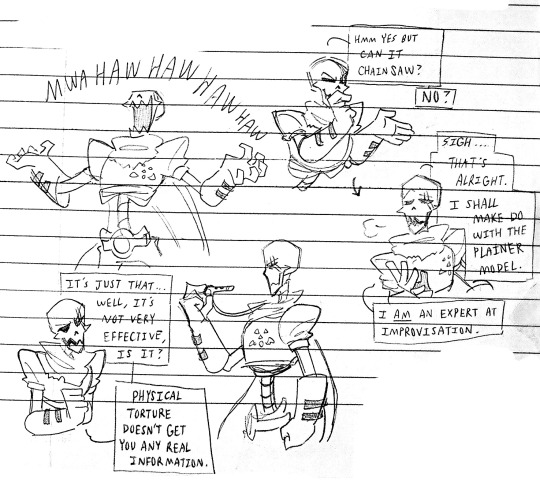



it's just so hard balancing being so cool and popular at the same time 😔
#he's stationed in a wintery area but he has no thick fur like the dogs#so he has insulation over his armour instead!#unfortunately he insists on the barebones look. it taunts the enemy with weak spots he says#my post#my art#underfell#underfell papyrus#underfell sans#I have like a designated favourite for each au and for underfell it's too obviously papyrus sjsksjlk
2K notes
·
View notes
